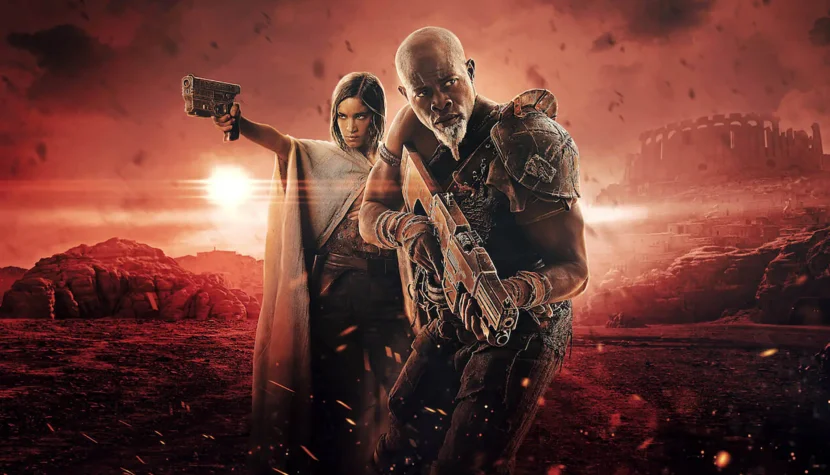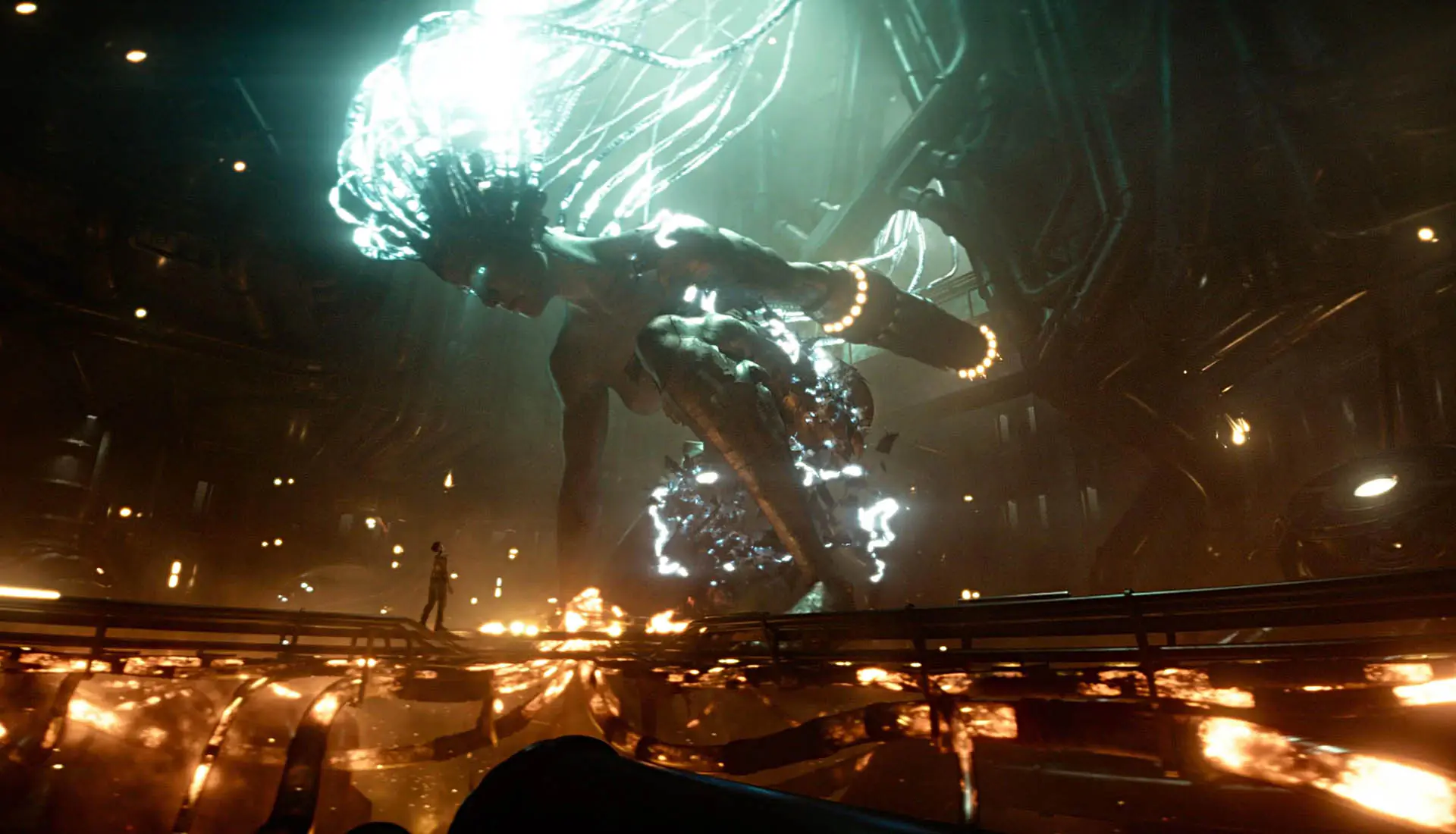REBEL MOON – Director’s Cut: More Blood and Fantasy Instead of Science Fiction

I have the impression that Zack Snyder uses the initial versions of his films to test the market and already has the full versions prepared. I don’t quite understand this approach because it generally brings more losses than gains. I would like to see the third part of the Rebel Moon saga, but in the director’s cut version, because it makes sense for this topic. It makes sense to present a bloody, primal world of space and heroic fantasy governed by the classic rules of the genre, only tangentially flirting with science fiction. I rated the previous versions 8 and 6 stars out of 10, respectively. The first part, Child of Fire, was always coherent, although one had to overlook the unbearable Snyderesque slow motion. However, it was not lacking in content and mysteries. The second part, on the contrary, combined unbearable slow motion with unbearable pathos and content simplifications, so the director’s cut saved The Scargiver. Now, the two parts have different titles – the first has been renamed Blood Chalice, and the second is titled Curse of Forgiveness. They last almost 6.5 hours compared to the original versions. That’s two more hours of material to get to know the story, which only now fully deserves its epicness.
It should finally spread its wings in the third part of the trilogy. Snyder should not give up, even though he has already heard so many unfavorable opinions. Time in film history is of great importance. How many valuable titles in the history of fantasy and science fiction would we not have if the audience decided in ancient times whether they should stay or disappear from the market, or even whether they should be made. I know it doesn’t make sense to make films if there are no viewers, but firstly, a negative viewer is also a viewer, and secondly, sometimes filmmakers make films for future generations, not the one that will go to the premiere. We as viewers should not overestimate the timeless value of our opinions. Our children will come and have a different one. The world will still exist in its natural order. So, what if I gave 8 and 6 to the successive parts of Rebel Moon in the past. Others came and said it was rubbish. What can I do but move on without regret and complaining. Similarly, I complained about the tiresome music in Snyder’s productions. The director’s cuts did not change that, so unfortunately, I will not remember such an epic saga for its wonderful soundtrack. He also did not improve the too-short depth of field. Slow motion remained at the same level, although paradoxically its reception is better.

This is thanks to the introduction of many new scenes and threads where slow motion does not appear. So, its original share in the production has decreased in percentage terms, and even if it appears in added scenes, it is not as pathetically striking as Kora waving the Motherland’s flag on a rock rising above the battlefield, like an American soldier after capturing Iwo Jima. So, I have already found the first advantage of the director’s cut. Another is a clearer genre location in fantasy due to the extension of sequences about magic. This applies to both the royal robot seneschal Jimmy, Princess Issa, and the goddess Rue Kala, whose power is used, for example, for hyperspace jumps and, interestingly, the reconstruction of Admiral Noble’s body, including neurotransmissions in which he connects with Regent Balisarius. His thread has also been expanded. He is now seen more as a human character rather than a figure whose actions in the original versions of the films had much less significance than Noble’s deeds. As for the aesthetics, they have not generally changed in style, but elements of blood and sex have been added. In both main and bold sequences, the viewer can admire Sofia Boutella. And by the way, I see from the perspective of years what has happened to eroticism in cinema. Today, Zack Snyder decides to introduce “bold” sex scenes into the film, but he actually only shows female breasts and a bit of buttocks. Times have apparently changed, but let it be considered courage that decides on the high age rating, i.e., 18+. Of course, the rich language full of curses and scenes of violence also decided this, but in this regard, we know from cinema history that Snyder has merely touched on brutal exploitation cinema. The amount of blood does not determine the viewer’s horror, but the feeling that the violence is real. It’s not the case with Snyder. There is a lot of violence, blood spurts from people like from fountains, heads explode like shot watermelons, all in slow motion and with energy weapon flashes. Typical fantasy made spectacularly, pathetically, and without emotional shading. Is that bad?
Some have recognized and will continue to recognize that the director’s cuts of Rebel Moon are as tiring as the original ones. This time, however, the torture will last not 4 but 6 hours. For me, the whole problem with Rebel Moon is Snyder’s stubbornness with some tricks. This is especially visible in chapter 2, titled Curse of Forgiveness. He fell madly in love with slow motion, lofty atmosphere, ancient motifs, and “touching wheat”. Gladiator is apparently eternally alive in his head. Indeed, Rebel Moon is somewhat reminiscent of a western and a myth, with technology being merely an addition to a very primal epic-like story. Unfortunately, even in the director’s cut, the sense of skillfully constructing the plot without unnecessary lengthiness, which is present in the first chapter of the saga, is missing. Although there is more material, and Djimon Hounsou very much wanted to return to his African roots, presenting ethnic singing, the basic errors have not been corrected. Therefore, I maintain the rating of the second part of the director’s cut at the same level as the original version, and I decided to do the same for the first part, although its director’s vision is much broader and better. The rating was originally high enough, with a margin, that it would be unfair to raise it. Snyder should be satisfied.

Making director’s cuts is always a risk. Zack Snyder was surely aware of this. Whatever he said officially, it is certain that making Rebel Moon had been his dream for years, which he finally fulfilled. Viewers did not have to play such a key role in this process. He had planned the director’s cuts from the beginning. Either he wanted people to have a choice, or he couldn’t decide which threads to touch on and which to remove, or he even reckoned that he might not make the third part, hence the long two. However, many threads have not been explained, so the third chapter is a necessity. What about Issa? After all, as Rue Kala states in conversation with Kora, one day it is Scargiver who is to awaken the divine sisters. That moment, not the death of Noble and Balisarius, seems to be the culmination of the saga. I hope Snyder knows this and will be as persistent as he has been with his style over the years of his filmmaking career. Life should have taught him stubbornness. He has gone too far in realizing this life dream to leave Rebel Moon without an ending. Besides, it is the third part that can still change the reception of the entire trilogy, which will gain flavor over the years, like the magical wine drunk by the hectoliters in the fantasy world.

